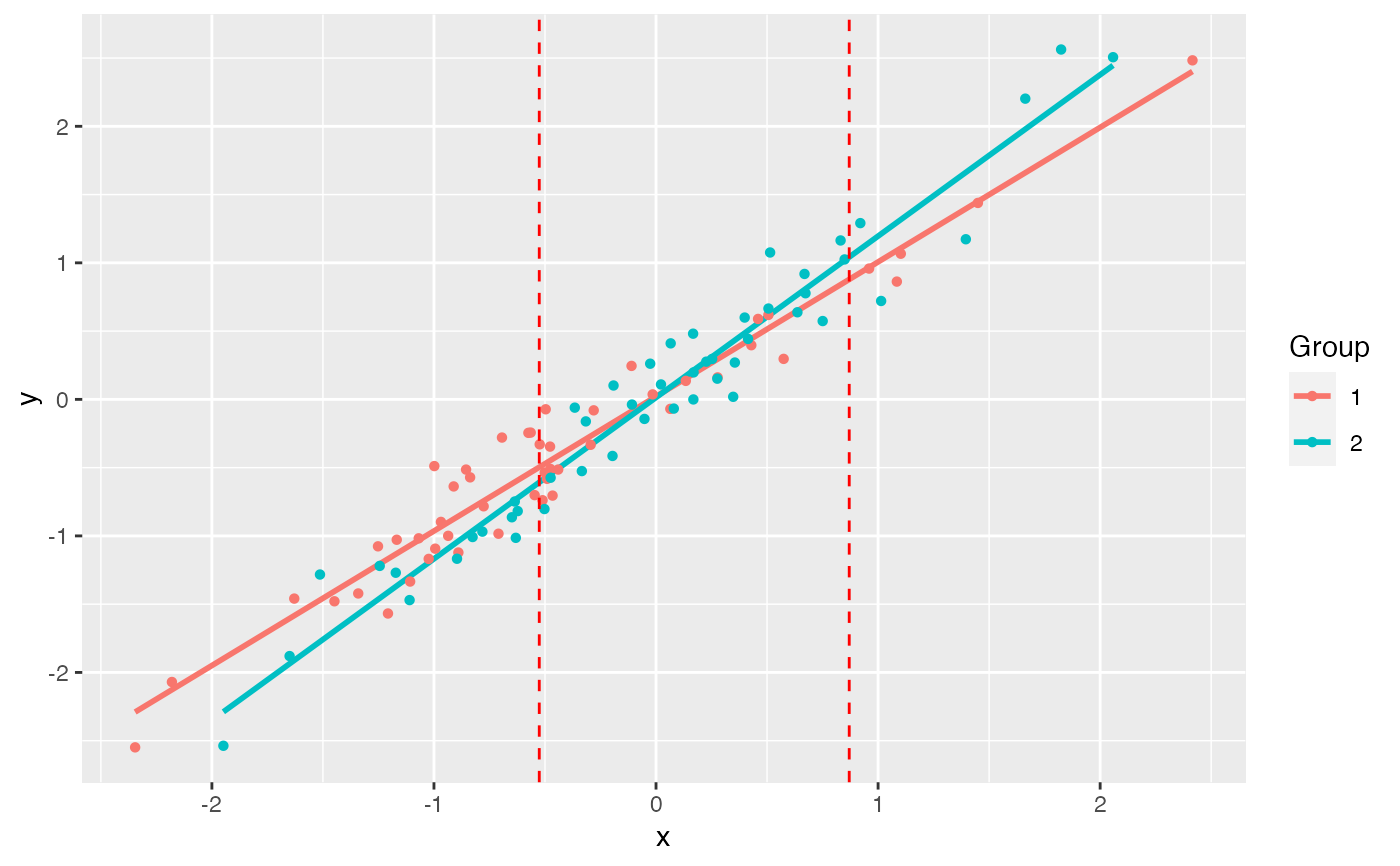Johnson-Neyman Technique
jnt( dat1, dat2 = NULL, which.is.fact = NULL, alpha = 0.05, total.comp = 1, use_sma = FALSE, silent = FALSE )
Arguments
| dat1 |
|
|---|---|
| dat2 |
|
| which.is.fact | Currently not implemented |
| alpha | Desired alpha level for comparison |
| total.comp | Total number of comparisons |
| use_sma | Boolean; use standardized major axis regression |
| silent | Suppress messages |
Value
A list of type jnt containing:
Data set 1
Data set 2
Alpha level
Slope for data set 1
intercept for data set 1
Slope for data set 2
intercept for data set 2
Lower edge of range of no significant different in slopes
Upper edge of range of no significant different in slopes
Details
This function performs the Johnson-Neyman Technique on data
contained in two data.frames. Currently only the method for
data.frames is implemented.
References
Johnson PO and Neyman J (1936) Tests of certain linear hypotheses and their application to some educational problems. Statistical Research Memoirs 1: 57-93.
Hunka S and Leighton J (1997) Defining Johnson-Neyman regions of significance in three-covariate ANCOVA using Mathematica. Journal of Educational and Behavioral Statistics 22: 361-387.
White CR (2003) Allometric analysis beyond heterogenous regression slopes: Use of the Johnson-Neyman Technique in comparative biology. Physiol Biochem Zool 76: 135-140.
Examples:
White CR (2003) The influence of foraging mode and arid adaptation on the basal metabolic rates of burrowing mammals. Physiol Biochem Zool 76: 122-134.
Lavin SR, Karasov WH, Ives AR, Middleton KM, Garland T (2008) Morphometrics of the avian small intestine compared with that of nonflying mammals: A phylogenetic approach. Physiol Biochem Zool 81: 526-550.
Author
Kevin Middleton (middletonk@missouri.edu)
Examples
# Simulate data set.seed(1234) n <- 50 x1 <- rnorm(n) y1 <- x1 + rnorm(n, sd = 0.2) x2 <- rnorm(n) y2 <- 1.25 * x2 + rnorm(n, sd = 0.2) df1 <- data.frame(x = x1, y = y1) df2 <- data.frame(x = x2, y = y2) (jnt.out <- jnt(df1, df2)) #> Fitting with OLS #> Assuming x variable is column 1, and y is column 2. #> #> Johnson-Neyman Technique #> #> Alpha = 0.05 #> #> Data 1: #> Slope 0.9853 #> Intercept 0.02126 #> #> Data 2: #> Slope 1.182 #> Intercept 0.01386 #> #> Region of non-significant slope difference #> Lower: -0.5258 #> Upper: 0.8701 #> plot(jnt.out) #> `geom_smooth()` using formula 'y ~ x'